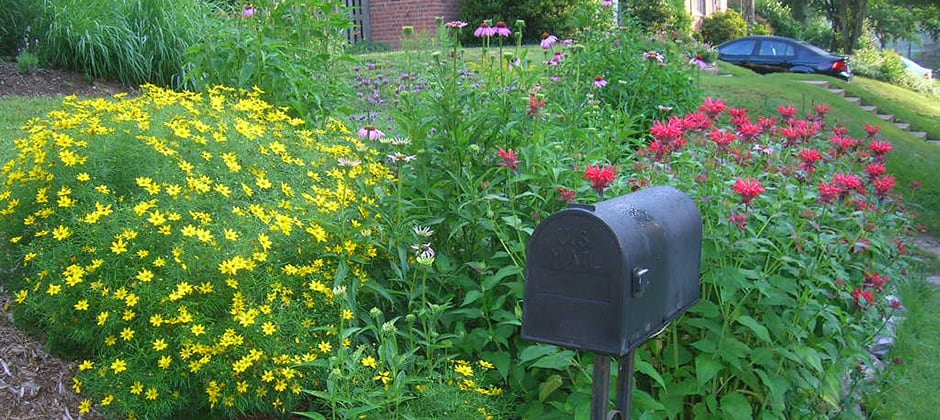Share this article
Yard care can help keep common birds common
When people manage their yards to benefit wildlife, common birds tend to flock to them. That can provide an often overlooked benefit for wildlife—keeping common species common.
In urban areas, large parks often provide habitats for a range of wildlife, but those aren’t the only areas that matter, said Susannah Lerman, a research ecologist with the U.S. Forest Service. Urban and suburban yards provide substantial green space that can benefit species. “Every single person managing those yards has a role to play in conservation,” she said.
Lerman led a study published in Ecological Applications in which she and her colleagues determined how birds responded to different types of yard care in comparison to urban parks.
Looking at parks with native vegetation and others not necessarily managed for conservation, they compared these parks to four kinds of yards managed in six cities—Baltimore, Boston, Los Angeles, Miami, Minneapolis-St. Paul and Phoenix. Some yards were deliberately managed for wildlife and certified through a National Wildlife Federation program. Some were managed to keep in water in the West where water is scarce, or keep out water in the East to avoid flooding. Others yards were dominated by lawns, with a range of fertilizer use and management.
In both the yards and parks, the team conducted timed point counts, identifying all the birds they could see and hear in a 50-meter radius. They also looked at characteristics such as vegetation and tree canopy cover on a neighborhood scale.
While parks supported the most bird species of conservation concern, they found, birds in yards also showed interesting patterns. Yards managed for wildlife hosted lots common species—species like blue jays (Cyanocitta cristata), verdins (Auriparus flaviceps), robins (Turdus migratorius) and chickadees (Poecile spp.)—but different yards often had a different mix of species. Highly landscaped yards, on the other hand, tended to be more uniform. “They would be more similar as you go from yard to yard,” Lerman said.
Comparing Google searches to eBird sightings, she and her colleagues gave the birds popularity scores and found the species people were interested in tended to be the ones that showed up in yards, regardless of how they were managed.
This is important when it comes to motivating people to help with bird conservation, she said, because even many common species are declining.
“How do we celebrate that people always have this connection with chickadees and robins coming to their feeders or getting worms from their lawns?” she said. “We can take advantage of what people really like.”
Lerman would like to see more homeowners make their yards wildlife-friendly. Out of “millions and millions of yards,” she said, only a handful are actively managed for wildlife. But when it comes to conservation, setting aside parks—“land sparing”—and wildlife-friendly landscaping—“land sharing”—are both important.
“It’s all hands on deck,” she said.
Header Image: Residential yards like this one made up of coreopsis, bee balm and purple coneflower provide important resources for birds. Credit: David Mizejewski/National Wildlife Federation








